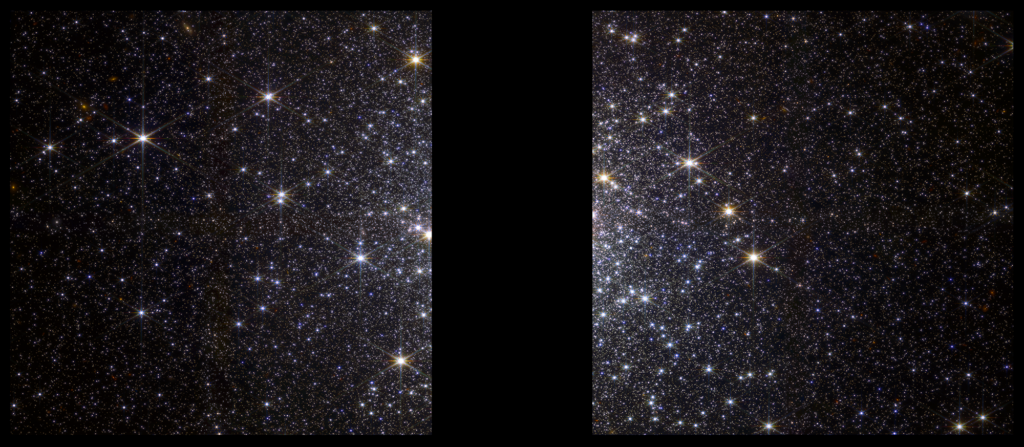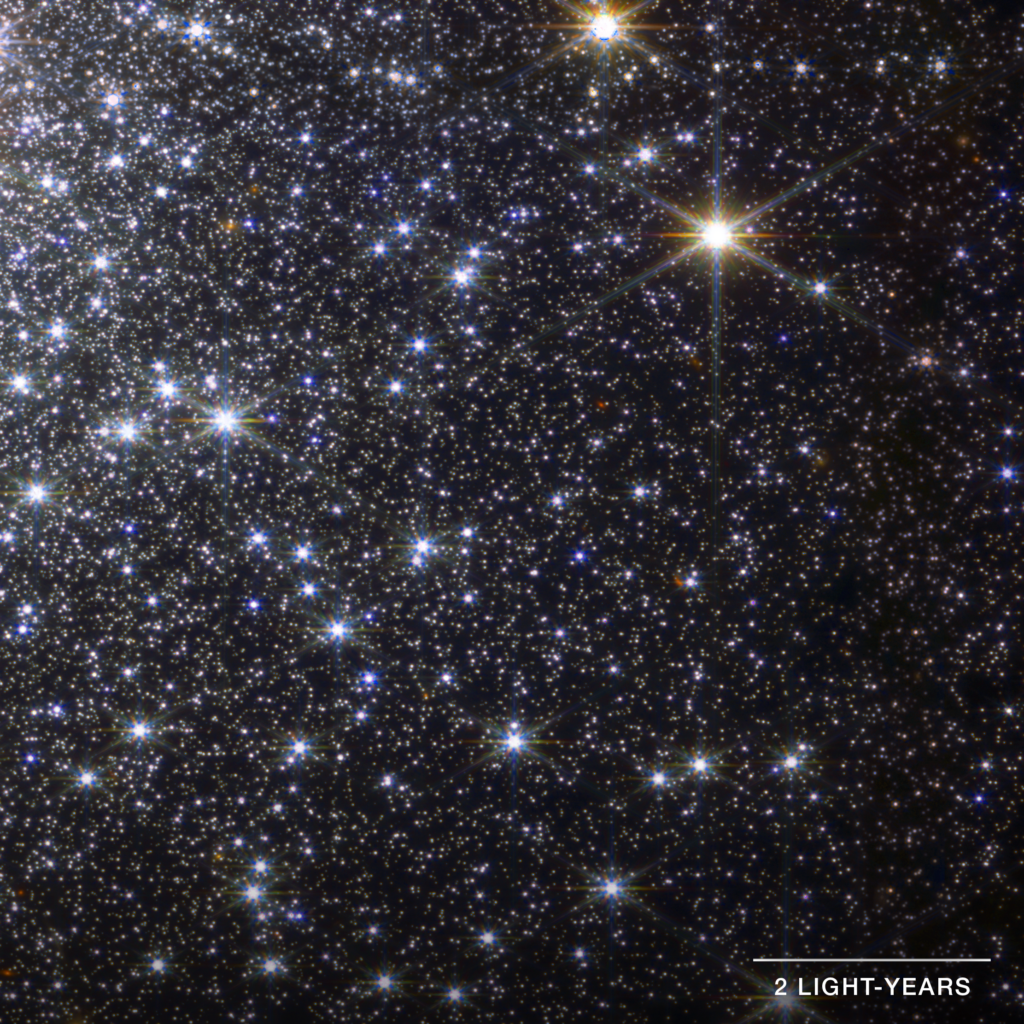Specialists of the James Webb Mission Support Group (JWST) have published a new image obtained by the space telescope. It shows the stars that are part of the globular cluster M92.

The globular cluster M92 is located in the halo of the Milky Way at a distance of 27 thousand light-years from Earth. M92 is one of the brightest globular clusters. Under ideal observation conditions, it can even be seen with the naked eye in the terrestrial sky (in the constellation Hercules).
Astronomers are investigating globular clusters in order to study the evolution of stars. In this regard, M92 is a good natural laboratory that allows to trace the changes in its stellar population. Another reason for the increased interest of researchers in this object is related to its age. M92 is one of the oldest globular clusters known to us. It was formed from 12 to 13 billion years ago, which made it the same age as the Milky Way.
In the JWST image, the center of the M92 is covered by a black stripe. This is due to the design features of the NIRCam camera — its two long-wave detectors are separated by a chip. The gap closes the cluster center, which is too bright to photograph both it and the dimmer stars on the outskirts at the same time.

The M92 image was compiled based on four images taken in different parts of the infrared range. The blue color corresponds to a wavelength of 0.9 microns, blue-green — 1.5 microns, yellow — 2.77 microns, red — 4.44 microns. The image covers an area approximately 39 light-years wide.
You can also read about how James Webb photographed galaxies that formed shortly after the Big Bang.
According to https://blogs.nasa.gov
Follow us on Twitter to get the most interesting space news in time
https://twitter.com/ust_magazine

